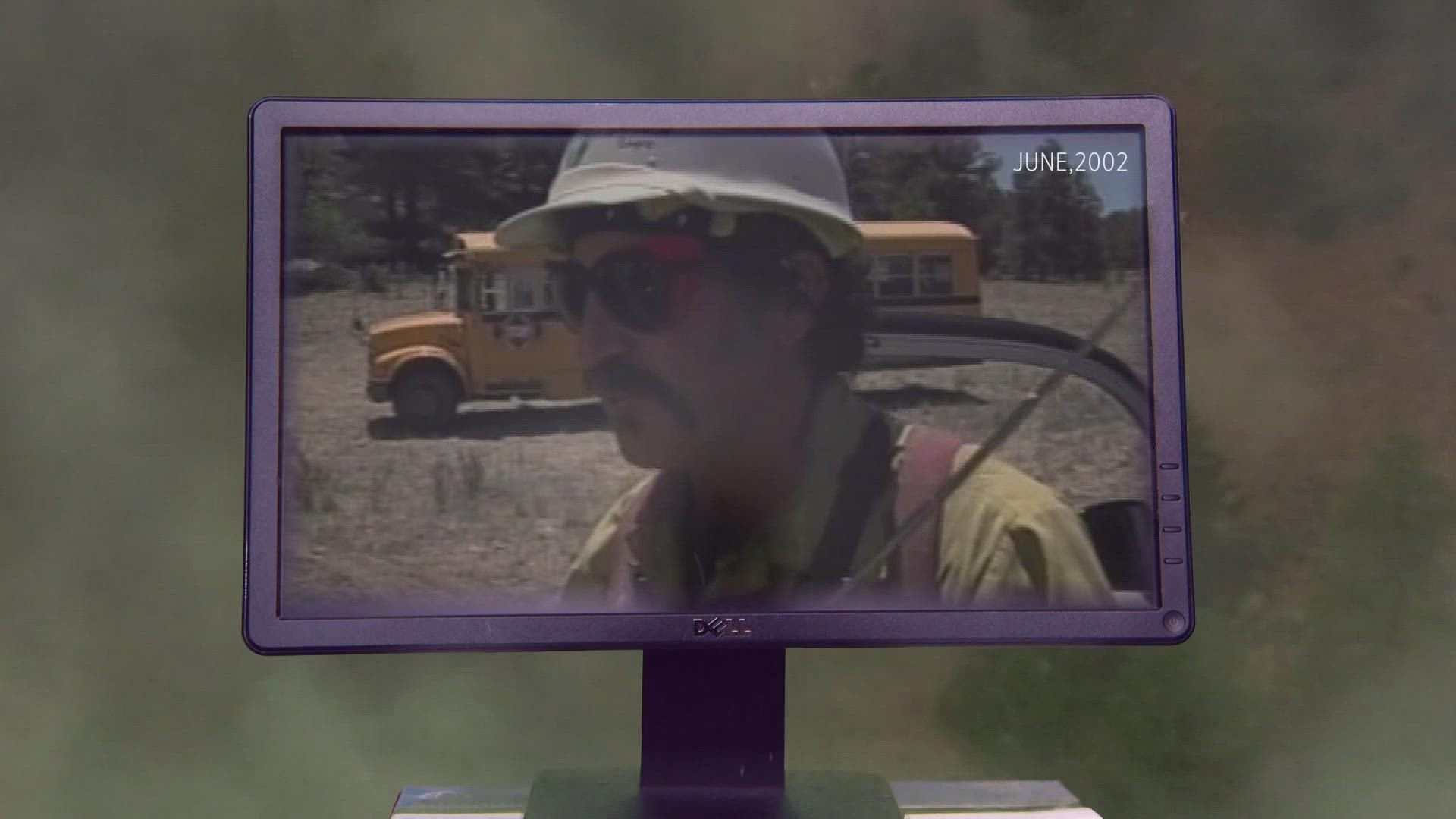LAKE GEORGE, Colo. — On June 8, 2002, firefighters Mike Berg and Peter Anderson were sent to Lake George in Park County to watch over a small fire that quickly exploded into the largest that Colorado had ever seen.
"The big surprise for us was just how quick it went," said Anderson, who was the planning section chief for the Type 3 Incident Management Team assigned to the fire. "Nobody had a clue, at that point."
In the days that followed, the Hayman Fire burned more than 138,000 acres (215 square miles) and destroyed 132 homes. Six people died.
Twenty years later, the wildfire has been bumped down the list of the largest fires in Colorado history from No. 1 to No. 4 – by the Cameron Peak, East Troublesome and Pine Gulch fires.
At the time, Anderson and Berg, who are now both retired, had never seen anything like it.
"We could already, very early on, tell that fire behavior was intensifying quickly," said Berg, who was the deputy incident commander. "From 6:30 in the morning till 9:30, we're talking big changes."
Fueled by wind, dry conditions, and an overgrown forest, the Hayman Fire exploded into more than 105 square miles in one day.
"A fire had spotted at the bottom of that hill, ate the hill that was probably the size of the hogback by Red Rocks, easily one of those hills, and it was gone in 30 seconds," Berg said.
At that point, they had one mission.
"Our job was to go in there and get everybody out of its way," Anderson said.
Video below: 9NEWS throwback story from the first days of the fire:
Berg recalled a distinctly disturbing sight on June 9, 2002.
"We could see from Lake George three complete, probably 35,000-foot-high columns of fire, of smoke," Berg said.
One of those columns got so heavy from particulates that it couldn’t hold itself up anymore and created a ground-level layer of smoke 50 miles wide, Anderson said.
"When it collapsed, the temperature dropped,” he said. “It went from like 85 degrees to like 65 degrees in like 20 seconds.”
The Incident Management Team had limited resources to work with at first. They had no firefighting capability from the air and only six fire engines, with a few dozen firefighters. There were two other wildfires burning in Colorado at the time, and the Hayman Fire didn't draw much attention at first.
"We were the third layer,” Berg said. “We were number three on that priority list. Yeah, there was no media. I mean, it was bizarre."
The flames got so big, so fast that Berg felt powerless to stop them.
"We could have had 3,000 firefighters standing in front of that fire, and all we would've had is 3,000 more people that needed to get out of the way," he said.
It was remarkable that more people didn’t die, he said.
Video below: 9NEWS throwback story on evacuations from the fire, as residents ask for answers:
Despite the tragedy and loss, the Denver metro area got lucky.
"We didn't know that what saved probably southwest part of Denver was a fire we had earlier, the Schoonover Fire," Anderson said.
The Hayman Fire ran out of fuel by burning into an area that the Schoonover Fire had already burned, he said.
"If it would've moved that way, that far at this point of inception, it would have eaten Evergreen," Berg said while motioning his hands slightly to the left. "It would've eaten all those areas."
Homes in the Roxborough area in Douglas County and homes in Jefferson County were under evacuation orders. Anderson sent word to the town of Evergreen to be prepared to evacuate more than 40,000 people, if needed.
Video below: the Hayman Fire burn scar looks largely the same after 20 years:
Since the Hayman Fire, Colorado has seen three more that were larger, all taking place in 2020. Yet the state still makes the same mistakes by building of mountain homes with wood instead of brick, Berg said.
"You get construction types over here. You get an increased population here. You get forest health over here,” Berg said. “You get people that may or may not decide to mitigate their house. But all of the expectations, the fire department's going to put it out. I'm sorry to tell you that's probably not going to happen.”
Megafires like the Hayman Fire will become the norm instead of the exception, they said. They worry about the safety of the next generation of firefighters as conditions remain generally dry and forests become overgrown with potential fuels.
"We need to be begin thinking differently in order to make the houses salvageable, people safe, all those things,” Berg said. “We need to start thinking differently.”
SUGGESTED VIDEOS: Wildfires in Colorado


